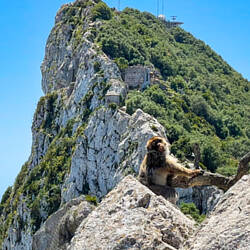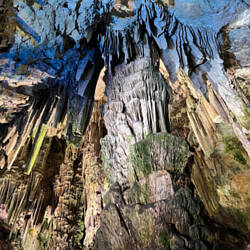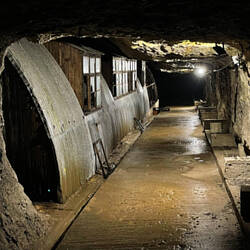- Show trip
- Add to bucket listRemove from bucket list
- Share
- Apr 19, 2022, 6:00 PM
- 🌬 18 °C
- Altitude: 45 m
 PortugalLisbon DistrictEriceiraCasa do BarrilSarradeiro38°58’54” N 9°24’53” W
PortugalLisbon DistrictEriceiraCasa do BarrilSarradeiro38°58’54” N 9°24’53” W
Four coastal & windy towns
 April 19, 2022 in Portugal ⋅ 🌬 18 °C
April 19, 2022 in Portugal ⋅ 🌬 18 °C
We’ve been told that winter (Dec - March) has been super dry in Portugal and so while the locals enjoy the changing weather these days, we can’t help to feel a little unlucky getting our generous portion of clouds, rain and heavy winds. As we move on south we are dealing with heavy winds (7 on the scale of Beaufort) and it immediately feels a lot colder. The shorts and t-shirts worn in Coimbra go back in the van’s cabinet: we need long pants and long sleeves for this! It does remain dry so that counts for something.
One thing the stormy weather does give us is a wild ocean to look at. I guess that’s exactly what we were hoping for when visiting Nazaré. Nazaré is a town popular with big wave surfers: the world record for surfing the highest wave ever was set here (24,4 meter high!). The waves we see do not get as high (by far they don’t), but it’s an interesting place to have visited before driving on to Peniche, another coastal town where we stay for the night. It’s a bit of a practical stop as the town doesn’t offer much special apart from big waves, pretty cliffs and a nice little Indian restaurant. The night remains stormy with gusts of wind pushing our van from side to side, and in the morning we need to rinse the van with water before leaving as there’s so much salt stuck to the windows we can not see through it!
Wind aside we enjoy the sun when we reach the third coastal town called Óbidos. Óbidos is truely a postcard destination! It is one of Europe’s best-preserved walled medieval towns and the cheerful colour combination of white, yellow and blue used on the houses gives it a welcoming look. Welcoming enough for us to go for a long stroll around and to enjoy a lunch in the sun at one of the little squares in town. It’s definitely our favourite out of these four towns.
Going where the wind blows, we end up in Ericeira - the fourth coastal and still very windy town in this update. Another surfers destination, although we do not see so many in the water probably because the wind is too strong. It is a cute town: it has a quiet and laid back vibe to it and we can imagine why surfers love this place to come back to and to stay for longer periods of time. We have got other places to be in, however, and get ready to move further down south.Read more








































































































































































































Traveler jullie krijgen je portie onstuimig weer wél zeg! maar ik ben blij te lezen dat jullie tóch genieten. leuk verhaal weer!